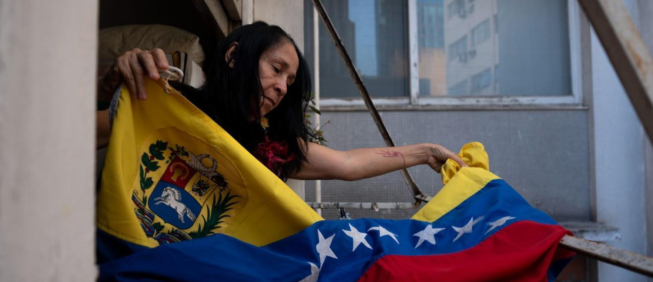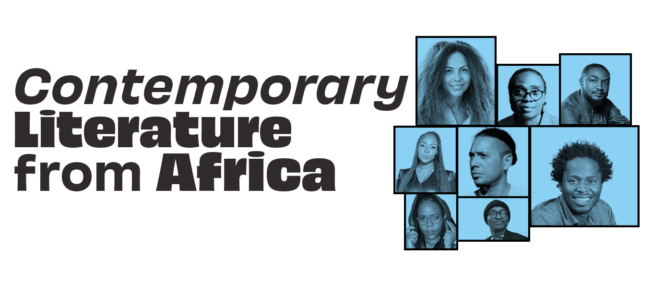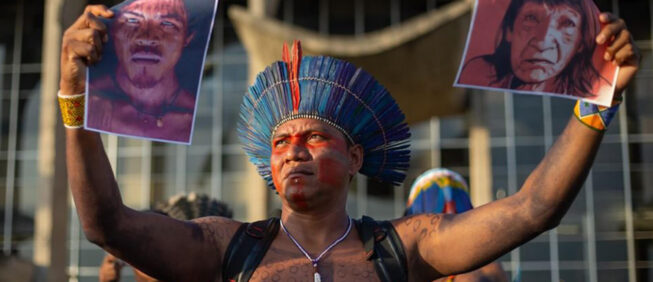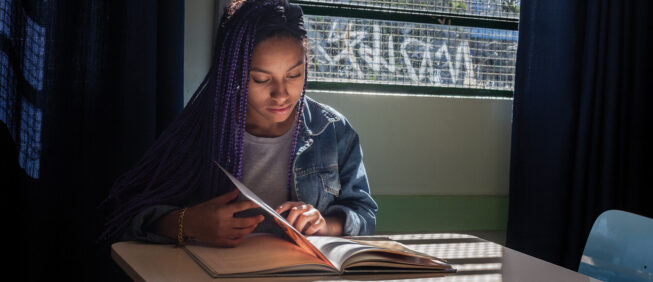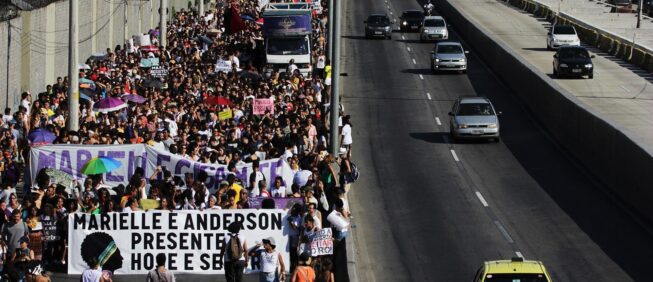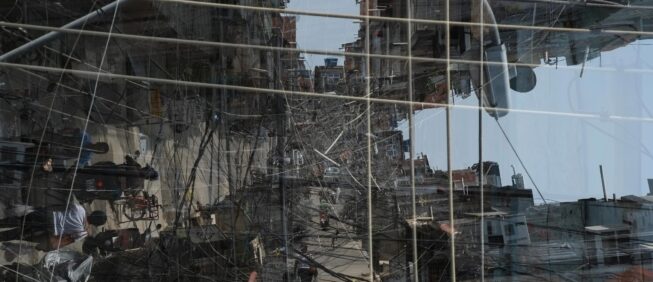Rojava's prisional systems
Restorative methods are the base for both civilian prisons and for ISIS prisioners
Abir Khaled
| Syria |
December, 2022
translated by Rojava Information Center
introduction by Rojava Information Center (RIC)
In 2022, the ‘Rojava Revolution’ celebrates its tenth anniversary. In the past decade, Rojava has grown from a project of Kurdish autonomy to a functional grassroots-democratic system, encompassing almost a third of Syria and millions of Syrians from diverse creeds and ethnicities. Rojava – or North and East Syria (NES), as it is now called - has also become the world’s bulwark against the threat of ISIS. With the territorial defeat of ISIS by NES’ Syrian Democratic Forces in 2019, the international community has deemed the war against ISIS a fait accompli, yet tens of thousands of ISIS-linked individuals remain in the custody of the SDF.
Roughly 11,200 former male ISIS members are in prisons across NES, though only around 3,000 have ever been tried. The Autonomous Administration of NES has established four prisons for ISIS convicts – Alay (Qamishlo), Ghweiran (Heseke), Raqqa, and Manbij (shared) – while three prisons exist for civilians — Kobane, Manbij (shared), and Derik. At least two dozen informal facilities for untried ISIS prisoners also exist. Additionally, over 58,000 ISIS-linked women and children languish in two open-air detention camps, where violence is common and new generations of jihadists are being radicalized. Iraqis make up about 31,000 of all ISIS detainees, while individuals of so-called third countries are said to be around 10,000.
Despite this, funding, repatriation missions, and support for an international court mechanism to try ISIS individuals by other countries is hard to come by. NES’ ISIS prisons and camps are a ticking time bomb – in January 2022, ISIS staged a large-scale attack in order to free their fellow fighters. Over 200 people died during the city’s defence. ISIS has promised to launch a similar attack on Hol camp, which houses 55,000 detainees.
Of equal importance is Turkey’s constant war against the region, which has translated into two full-scale invasions in 2018 and 2019. During the latter, dozens of ISIS detainees escaped, as prisons had to be left unguarded. In the summer of 2022, Turkey once again announced that they would invade NES. The SDF has warned that they cannot fight a war and guard ISIS detainees at the same time.
Abir Khaled has been the co-chair for the Office of Justice and Reform Affairs (General Administration of Correctional and Rehabilitation Centers). From 2017 to 2019, she served as the director of the Houri Center, a rehabilitation center for children, including of ISIS-linked families. Between 2015 and 2017 she was the Responsible for Prisons and Detention Centers for North East Syria’s Internal Security Forces (Asayish). From 2013 to the end of 2014, she was the director and editor of the ‘Sawt al-Hayat’ magazine. Abir describes her work as Prisons Administrator primarily as “humanitarian work.”
The prison system in North and East Syria is really two parallel systems. On the one hand, there are the civilian prisons, those that deal with everyday crime. These prisons are run according to the traditional incarceration model, but we hope to make them obsolete one day. Around 2,700 people populate these prisons. In some select places, traditional prisons have been supplanted by educational facilities, where those who commit crimes read and discuss, but are free to leave at any point. Until now, this model is not yet widespread.
Within the prison walls themselves, the most important difference between our approach and the Syrian regime’s is that we put a strong emphasis on the prisoners’ well-being. Whereas once people would disappear for years without passing through the courts, people would be held in horrible conditions, people would be tortured, people would die, sometimes people would be forgotten, we put a strong emphasis on abiding by the law and providing appropriate prison standards.
More importantly, our revolutionary approach lies in the ways crime is addressed before it ever reaches the court. Reconciliation committees and Women’s Houses (for domestic issues) have been very successful at stopping conflict before it turns into crime, and providing alternatives to incarceration.
There exists, however, a parallel system to the civil incarceration system, many times larger than the former. This is our terror problem. North and East Syria today has 3,000 ISIS convicts in prison, and many times that number in people yet to be tried in court. The YPG/YPJ liberated most of Syria of the ISIS threat, and, as a result, we have tens of thousands of ISIS suspects in our custody today. Due to our high legal standards, we find it impossible to successfully try them and be able to convict them, as every case can take several months to years to research and complete.
This prison that we stand in, for example – Ghweiran prison – only harbors tried convicts and is relatively small. Sina’a prison, around 2km away, which was where ISIS staged an attack in January, has several times the number of detainees. After the attacks, we have tried to separate civilian and terror prisoners even more. Since the attack, we had to cut basic privileges for prisoners due to security reasons, such as family visits and telephone calls, but there is no need that civilian prisoners suffer under these measures.
Overall, though, we try to uphold high standards, even for ISIS prisoners. We provide medical services, food, television, air conditioning, exercise in the courtyard – many things even normal citizens in NES do not have. Beatings and violence are forbidden. There have been individual cases, but we take measures to prevent these and react when these things happen. In each room, depending on the size, there are 35-50 prisoners. We recognize that the rooms are quite crowded; we have too many prisoners and not enough prions. That is why we are forced to transform other buildings into prisons. The Autonomous Administration of North East Syria (AANES) is paying for all of this. The International Coalition provides us with limited funding, but, other than that, the needs of tens of thousands of ISIS detainees are being paid for by the AANES. This is money that should be being spent on society.
Yet even with ISIS, we attempt to introduce restorative methods. We provide many ISIS detainees with an education. People who before had only been taught under ISIS’ model are learning to read and write. We see education as being enormously important, but we lack the means to expand this system. For civilian prisoners, we focus on the topics of ethics and society; for ISIS detainees, we center their education around Islam, but a more democratic view of the religion. We also teach them our ideology and especially about the principles of democracy. We even read them books of Abdullah Öcalan.
Yet we see that many ISIS prisoners still harbor immense prejudice against Kurds. They have been taught by ISIS that Kurds are bad, that they do not believe in God, that they are unlike Arabs. With the daily contact between prisoners and guards, conversations, and education they go through, they come to see Kurds as human beings, too, and very often feel regret. This notion is often expressed by former ISIS fighters from regions where they would only seldom interact with Kurds, such as Homs and Idlib.
We also try to take children out of this system. There is already one rehabilitation center for minors who grew up under ISIS; a second one is under construction. A number of children considered trangressors also visit this rehabilitation center, though they are kept apart from the children with an ISIS background. Children can stay at these centers for seven years, as they are giving an education and psychological support to rehabilitate them into society, while still being able to talk to their families. We teach them to read and write, and we speak about ethics. ‘Save the Children’ co-runs the center; they do a good job. For those released after rehabilitation who still face difficulties, they can receive help at Women’s Houses, which aid in domestic issues. If problems persist, we may transfer the children to orphan care.
In the short term, it would be good to have fewer, but better prisons in order to make them better-suited for detainees, to be able to improve education within them. As of now, the way that most prisons are built does not help in truly rehabilitating people, which should be our ultimate goal. But due to ISIS’ attempts to free their fellow fighters from our prisons, like in January, we instead have to invest in further fortifying our prisons and detention camps, to prevent ISIS from re-establishing itself in Syria. Sadly, most countries are not repatriating their foreign fighters in our prisons, or helping us to establish an international mechanism to try them in court.
All of us who work in the justice and prison system know that the current system falls short of our values. Our philosophy is that prisons should not be needed, but due to the situation we find ourselves in – attacked not only by ISIS, but by states like Turkey and Syria, too – we have not been able to implement another system. For the moment, we try simply not to hurt people, and to attempt to gain their trust. We strive towards a world without prisons, but at this time, for us, it is not possible.
Abir Khaled | SYRIA |
Co-Chair of the Office of Justice and Reform (Administration of Correctional and Rehabilitation Centres). From 2017 to 2019, she was the director of the Houri Centre, a rehabilitation centre for children, including families linked to the Islamic State. Between 2015 and 2017, she was the Head of the Detention and Prisons Centres of the Internal Security Forces North East of Syria (Asayish). From 2013 to 2014, she was the editor of the magazine Sawt al-Hayaté.

